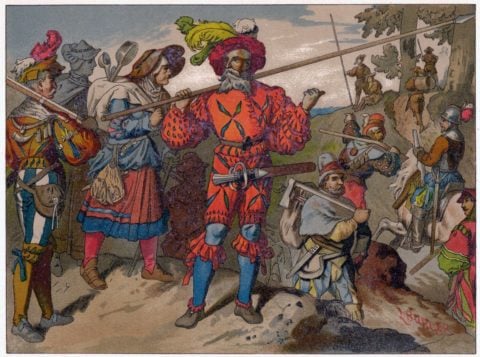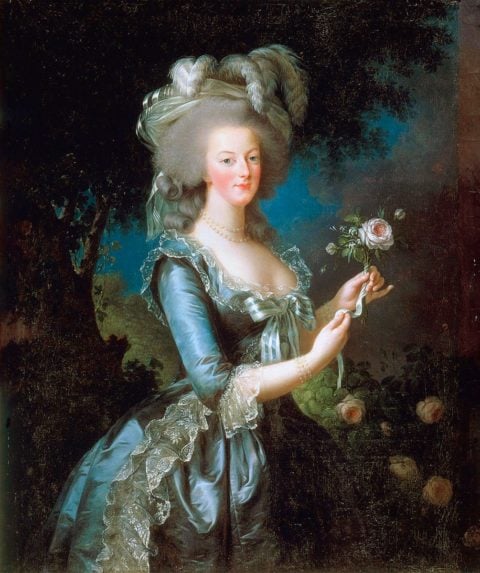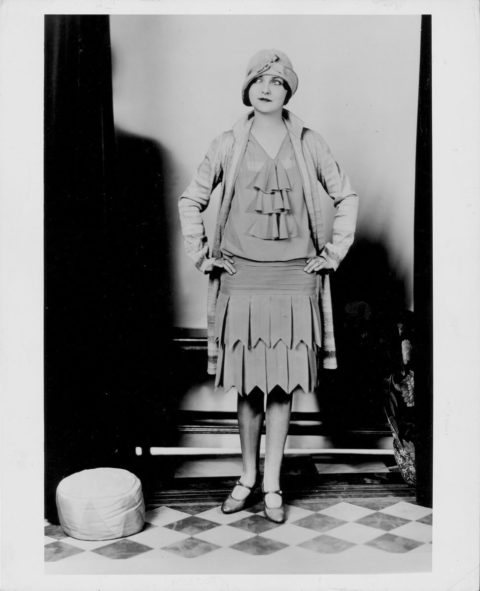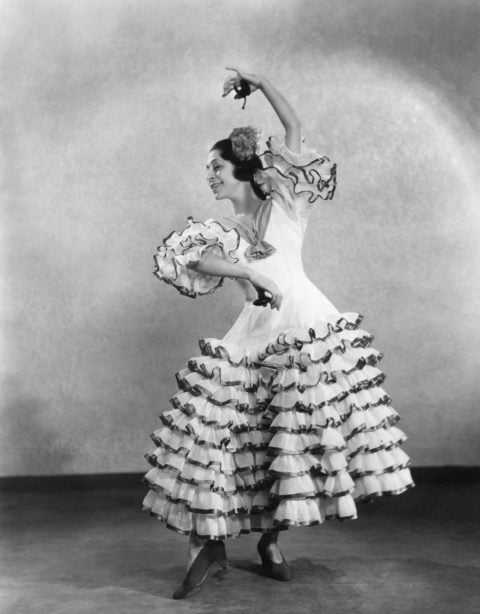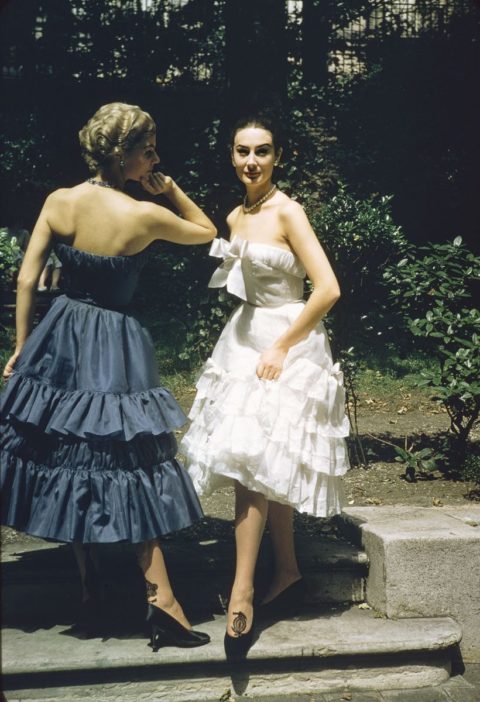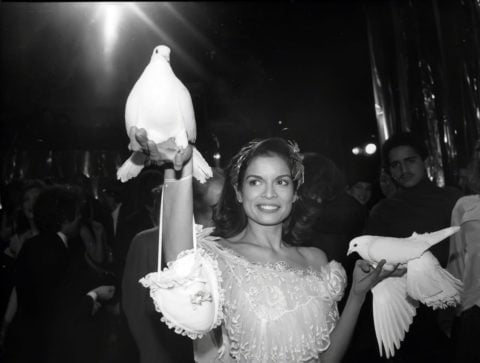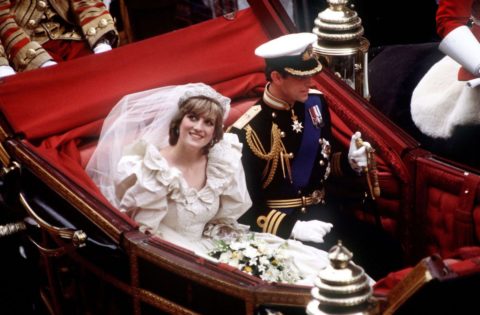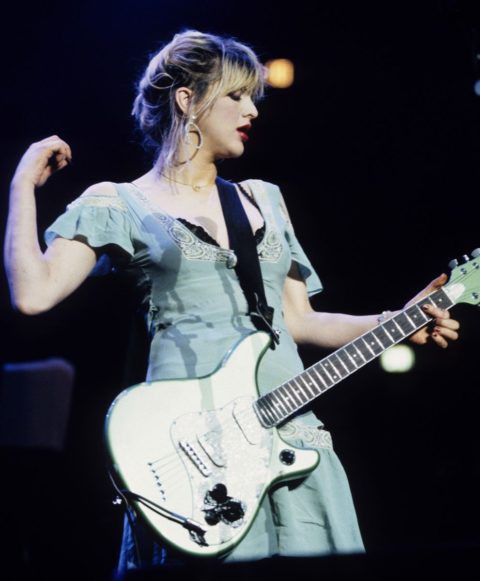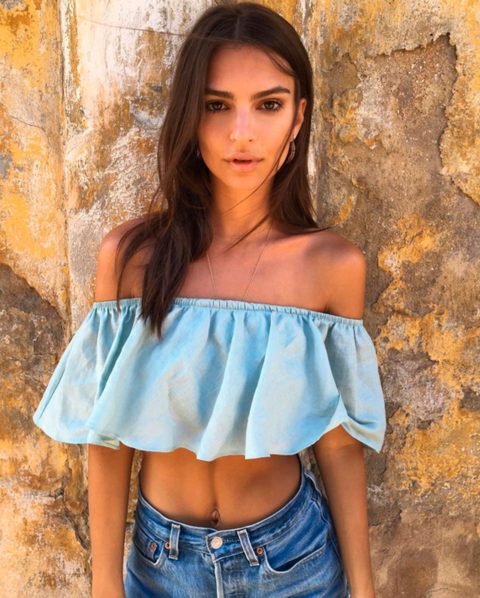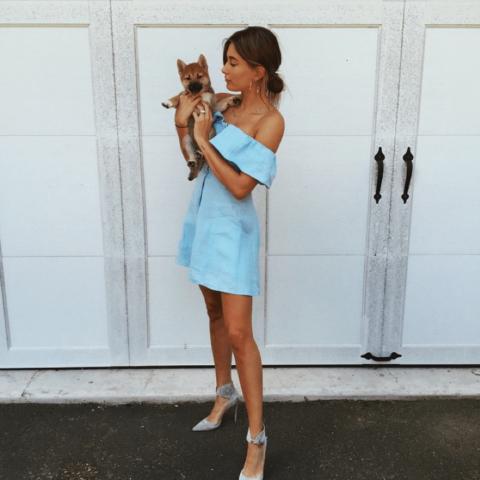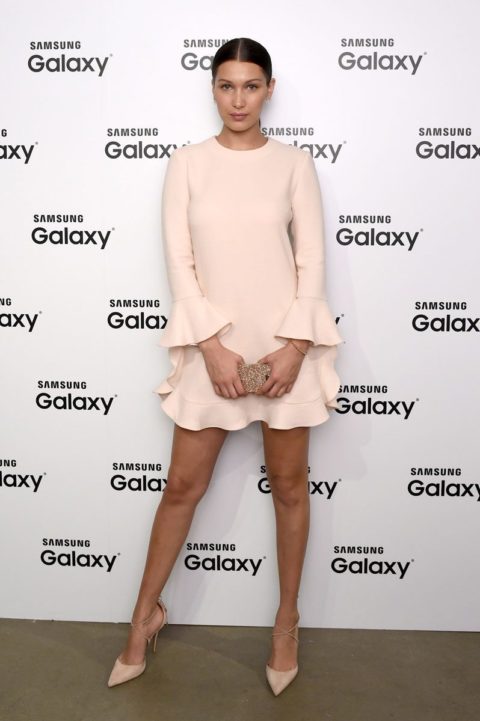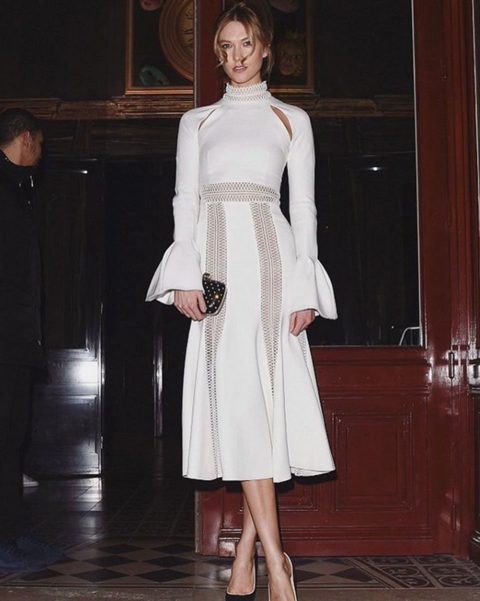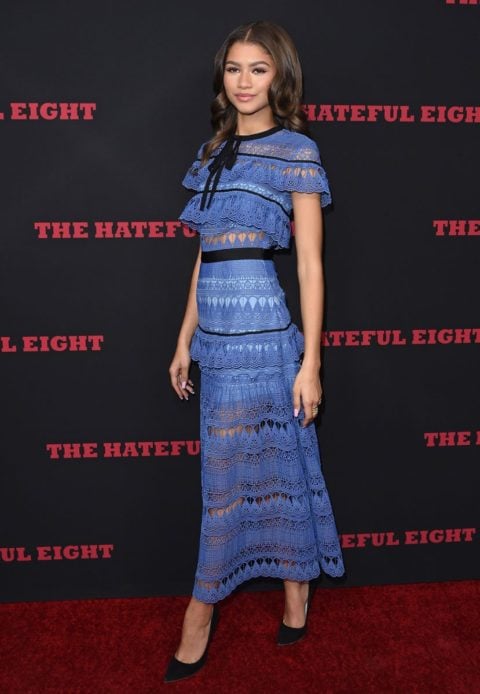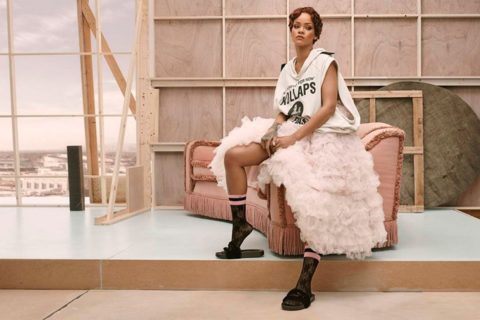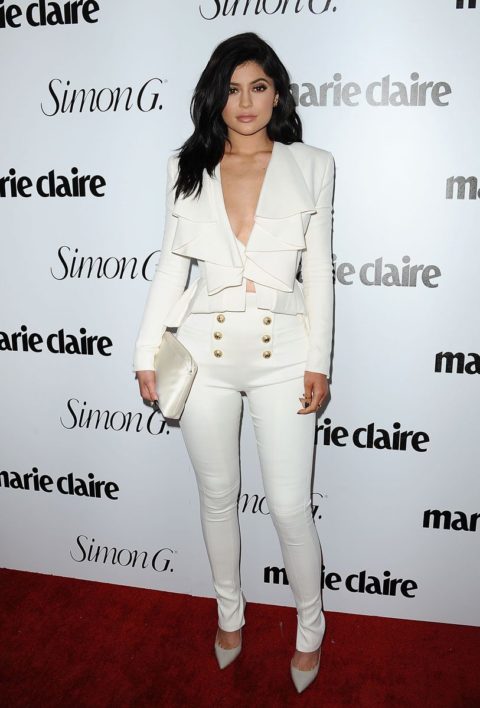The ruffle’s watershed moment in pop culture likely occurred when Jerry Seinfeld, the founding father of normcore, debuted his ostentatious “puffy shirt” on national television to great LOLs and general SMHs (for the record it was a poet blouse, and it was amazing). Outside of that, the ruffle’s claim to fame has pretty much been its association with 17th Century portraits of aristocrats being eaten alive by oversized collars. And yet, it’s managed to stick around—for the last 600 years, in fact, and reaching a fever pitch once again for Spring 2019 as one of the biggest trends of the season.
The ruffle’s ability to adapt lies in its inherent simplicity. At the end of the day, it’s really just a wrinkled piece of cloth. It is precisely this ease of imitation that has allowed the ruffle to stand the test of time and survive the ravages of ever-changing fashions. People’s enjoyment of looking like giant, over-iced cakes obviously helped too. However, the origin of the ruffle was actually a lot more humble than such a preference might suggest.
So where did it come from? How can Marie Antoinette, flamenco dancers, an infamous shirt from a nineties sitcom, and Spring 2019’s most prevalent trend all share an affinity for the same undulating piece of cloth? Join us, as we track the history behind one of fashion’s most enduring staples.
the The The Unlikely History of Ruffles
1500s
In 16th Century Europe (stay with me here), it was common to wear two layers of clothing. German soldiers began the practice of incising slashed patterns into the colourful, decorative outer layer of cloth, revealing the more plain layer beneath. It is speculated this came into fashion as it mimicked the ragged look of returning from war—something like a badge of honour. These inner layers were also prone to wrinkles, which soon became the pleb look du jour (I mean, tell me this dude doesn’t look chic AF).
The The Unlikely History of Ruffles
Elizabethan Era (1500-1600s)
Eventually this wrinkled effect was enhanced with the help of a manmade ‘ruff’—a wide, pleated collar intended to be worn separately around the neck. They were stiffened with starch or wire, expensive and time consuming to care for, and gave the wearer the effect of holding their head up in a proud and lordly pose (Queen Elizabeth I was a huge fan, natch). At the height of its popularity, these aggressively oversized ‘cartwheel ruffs’ reached a diameter of 36 inches, which made it impossible to dine without the assistance of elongated utensils—the ultimate in chic dinner accessories.
The Unlikely History of Ruffles
1700s
With the advent of lace collars, the ruff fell out of fashion, and double layer cloth patterns ceased to be used, likely due to a preference for showing off the human form (especially that of the female’s, and especially within the hedonistic court of France). However, the ruffle effect was still considered desirable, so it became common for pieces of wrinkled cloth to be sewn onto the collars and sleeves of dresses. Marie Antoinette was known for her love of ruffles, thus cementing their status in extravagant, opulent fashion forever.
The Unlikely History of Ruffles
1920s
Ruffles persisted into the beginning of the 20th century, although they were applied to the more sleek silhouettes and rising hemlines of the flapper style.
The Unlikely History of Ruffles
1930s
Flamenco costumes heavily featured ruffles, utilizing their natural bounce to enhance the movement of this rapid style of dance.
The Unlikely History of Ruffles
1950s
After the wartime rationing of the 1940s, a desire for voluminous, indulgent fashions returned, and with it, the decadence of ruffles. These over-the-top shapes were especially favoured by couturiers like Dior and Balenciaga.
The Unlikely History of Ruffles
1970s
The seventies were a time of hippie love and ethereal, floaty fashions—the ideal climate for the more structured ruffle of the fifties to be reborn. Bianca Jagger was the unchallenged queen of this movement, pictured here at Studio 54 with ubiquitous white doves.
The Unlikely History of Ruffles
1980s
Likely the most famous ruffled dress in history, Princess Diana’s larger-than-life, fairy tale wedding gown introduced the style to an entirely new generation. Poufy, ruffled dresses would go on to become a hallmark of the eighties club scene.
The Unlikely History of Ruffles
1990s
The delicate, babydoll ruffled dresses of yore were re-appropriated during the nineties grunge phase, with disheveled girl rockers like Courtney Love bringing burned out, frilly slip dresses to the masses.
The Unlikely History of Ruffles
Today
Fashion’s current obsession with the ruffle is seemingly a hybrid of all the iterations that have come before—it’s a little ladylike, a little boho, a little subversive. The off-the-shoulder version seems to be one of the season’s favourite renditions of the style, and, quite frankly, no one rocks it better than Emily Ratajkowski.
The Unlikely History of Ruffles
…ok fine, Hailey Baldwin looks pretty great in it too.
The Unlikely History of Ruffles
Bella Hadid is also bangin’ in this minimalist number.
The Unlikely History of Ruffles
Karlie Kloss on that ruffles/oversized-sleeve tip.
The Unlikely History of Ruffles
Zendaya going full Southern belle with her ruffles.
The Unlikely History of Ruffles
Poppy Delevingne in the ruffled bather of our dreams.
The Unlikely History of Ruffles
RiRi slaying in a frothy ruffled skirt for her Puma slides campaign.
The Unlikely History of Ruffles
And finally—because it’s not a trend unless Kylie’s doing it. Happy ruffling!
The post Charting the Unlikely History of Ruffles appeared first on FASHION Magazine.
Use left/right arrows to navigate the slideshow or swipe left/right if using a mobile device
